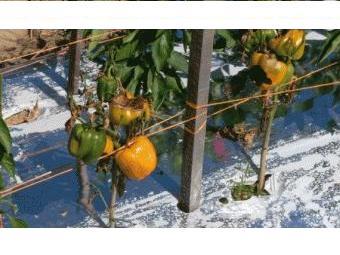
Section Branding
Header Content
Science, Math, and Peppers
Primary Content

I grew up in the very rural southeastern corner of Georgia. The geography of my early life was directly impacted by agriculture in a way that my “city friends” in Atlanta just cannot grasp. As a youth, our school calendar was delayed until after most of the tobacco crops were in because so many of my classmates were working in the fields to collect the harvest. That has changed since I was in school (a couple decades ago), but many Georgians are directly impacted by our diverse and ample agricultural market.
It isn’t just those rural students affected by the state’s agriculture, though. The rest of Georgia is dining on the products, and the millions of dollars in agricultural trade and research each year go a very long way to support our economy. For example, Carlos Diaz-Perez has been researching ways to use shade and mulch to produce a better crop of peppers. In Georgia, peppers are a $28 million crop! But, half of the crop can be lost to sun scald (pictured), pests, and disease. Using scientific research, Diaz-Perez discovered that 30% shade and silver – instead of black – much produced a better, healthier crop of peppers. Ultimately, this can be used to plant a smaller field with larger yield, freeing space for other crops, or a larger crop for larger yield, so that the produce market is more thoroughly saturated with Georgia peppers. Either scenario means that because of Diaz-Perez’s research, peppers are a more sustainable crop.
My dad planted a vegetable patch in a rather shady spot of the yard. The only plant that he ever had any success with… was peppers! I thought it was hilarious when I was young. It turns out it was just science.
What is commonly grown in your area of the state? Can your students think of some innovations that would improve the crop in quality, health, yield, or even marketing and distribution?






